Top 10 Enterprise Blockchain Platforms to Consider in 2022
Blockchain-based solutions are transforming how institutions and organizations from various fields conduct their business.
From September 2021 to June 2022, the blockchain sector has received over $6 billion from approximately 40 top companies such as BlackRock, Alphabet, Morgan Stanley and Goldman Sach. This clearly outlines the faith of companies and institutions in blockchain technology and Web3 despite the bear market.
According to an August investigations from Blockdata, 44 of the top 100 public companies globally use blockchain technology. These are businesses from technology, media and telecoms, consumer and retail trade, healthcare, finance and several industries.
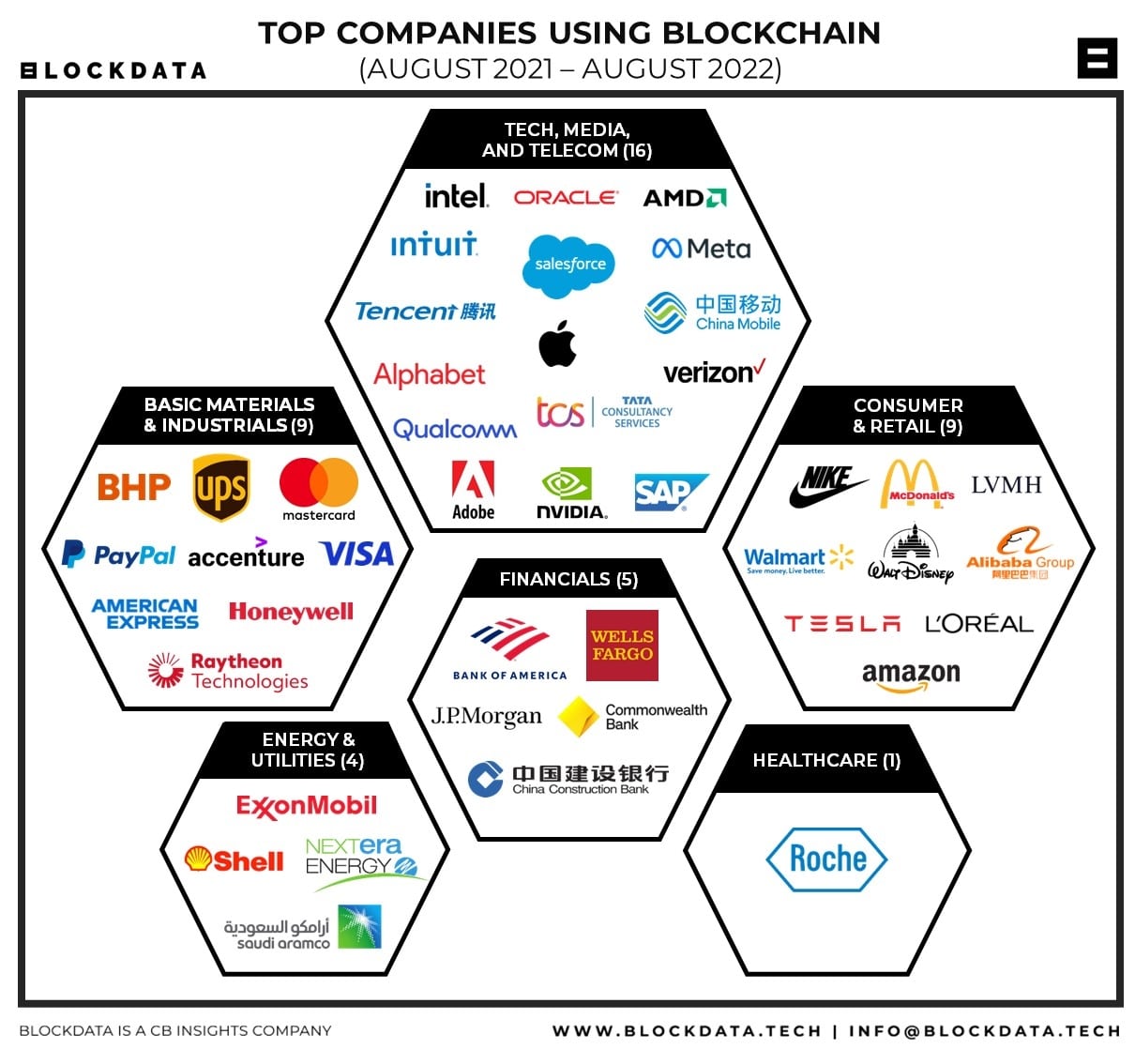
With so much room to grow, developers can feel overwhelmed when choosing a reliable blockchain platform for their business. The next list includes the best enterprise blockchain platforms that solve pain points in various industries and increase Web3 adoption.
1. Ethereum
Ethereum is a decentralized blockchain ecosystem for transacting cryptocurrency coins and tokens and for creating decentralized applications (DApps) using the platform’s smart contracts.
Ethereum’s open source infrastructure has enabled various organizations, institutions and companies from all sectors to build enterprise-grade blockchain applications for their businesses. Some of them use Ethereum-based platforms.
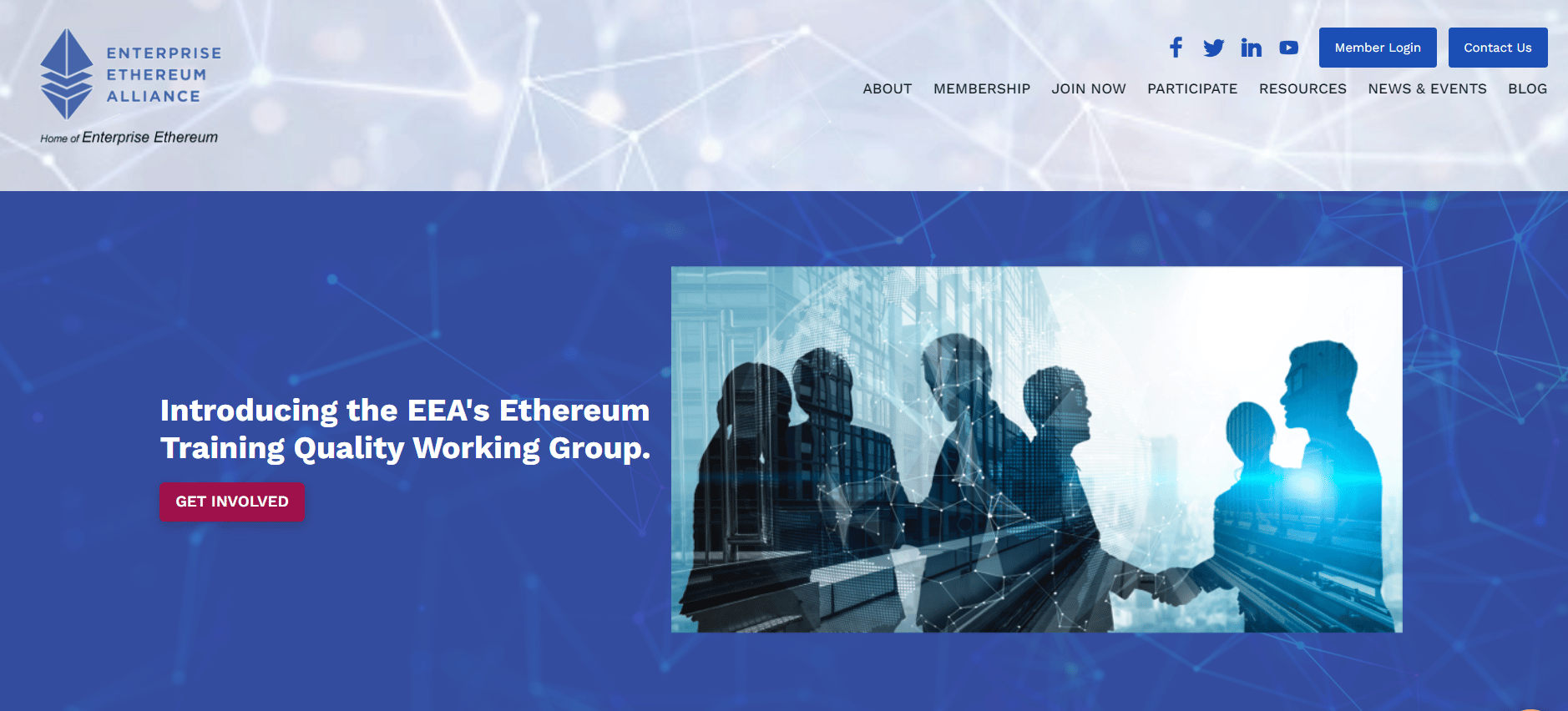
The Ethereum Enterprise Alliance is the organization that supports and promotes the use of Ethereum as a blockchain service for businesses.
Some examples of enterprise Ethereum-based applications are investment bank JP Morgan, which used Quorum, a private enterprise Ethereum iteration, to launch JPM Coin; and Microsoft, which used the Ethereum blockchain to create an anti-piracy software system called Argus.
2. Hyperledger fabric
Hyperledger fabric is a blockchain framework created by the Hyperledger Foundation. Enterprises can use this framework to build permissioned (private) networks with fully customizable parameters. These applications are built in a modular, general-purpose infrastructure for use across different fields, such as supply chain, online banking, payment systems, etc.
Hyperledger Fabric’s network is composed of different members, similar to network nodes. These members are organizations such as banks, financial institutions and other organizations that perform different tasks and can communicate with each other
3. Alchemy
Alchemy is a blockchain development platform that offers a diverse suite of products that can be used across multiple blockchain networks, including layer-1 such as Ethereum, Solanaand Flow, and scaling solutions such as Polygon, Arbitrum and Optimism.

Alchemy allows Web2 to Web3 clients to build or connect their apps, such as crypto wallets, NFT projects and DeFi, to these blockchain ecosystems and scale their businesses. Alchemy simplifies the development process with the Alchemy SKD (Software Development Kit).
4. Stellar Lumens
Stellar Lumens is a tier-1 platform primarily designed to provide financial applications to developers, startups and institutions. These apps can be used for asset issuance, online banking, cross-border payments, money transfers, CBDCs and more.

The Stellar network is managed by the community of XLM holders. All transactions on the network are paid for with XLM, and users can trade it alongside other coins or tokens in the platform’s decentralized exchange (DEX).
Stellar Lumens allows institutions to create digital representations of fiat currencies, such as Argentine pesos or dollars, and transact with their customers or businesses. These assets can be exchanged for traditional money, as each token is backed by a corresponding deposit.
It provides extensive documentation and SDKs to help developers create decentralized applications. Developers can also ask for help and discuss their projects in the Stellar Community Forum.
5. Landslides
Avalanche is a high performance lag-1s in the DeFi sector. Its blockchain is composed of three different subnets that allow it to scale and improve throughput to thousands of transactions per second.
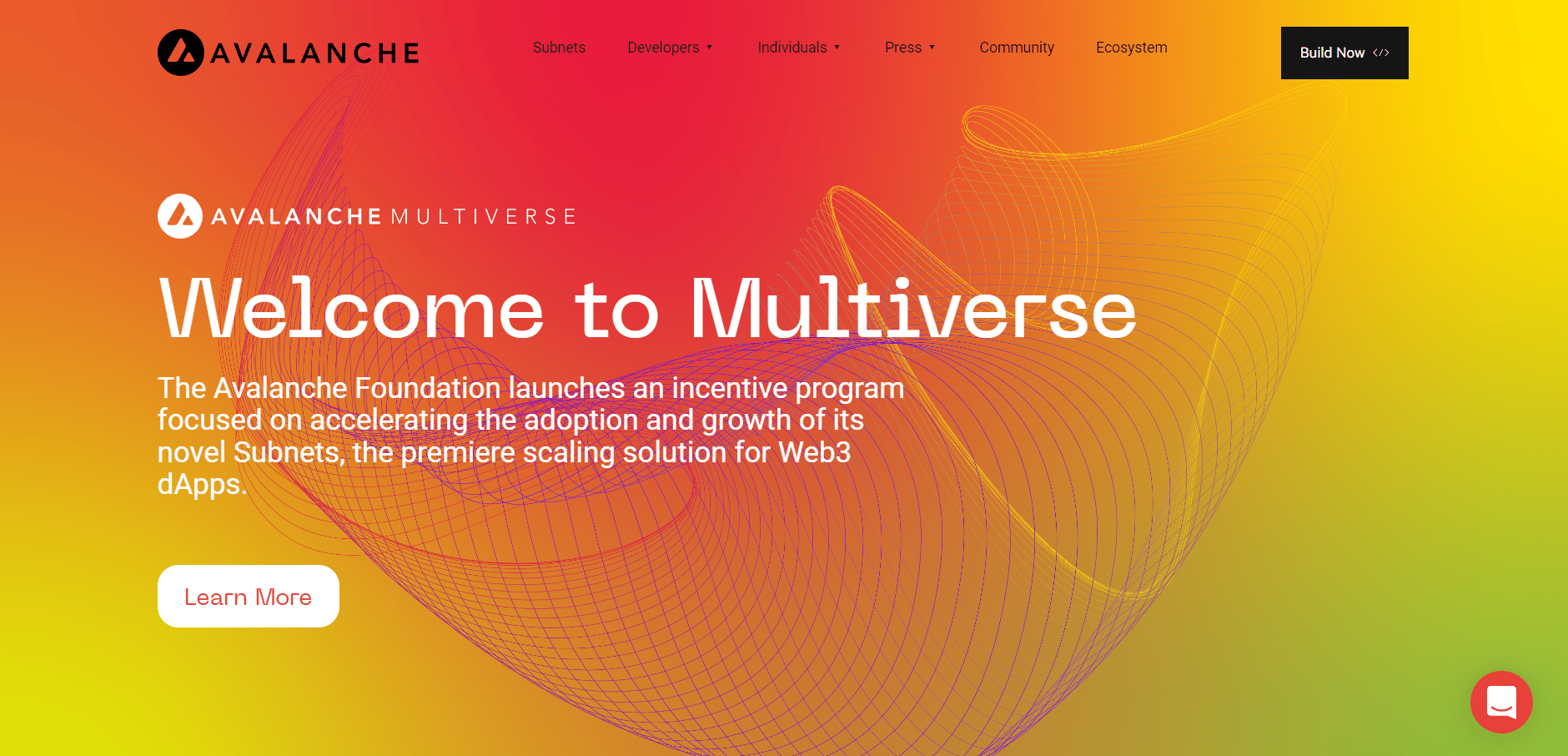
Avalanche allows startups, institutions, and organizations to create and build blockchain applications using development tools, fully customize their DApps, or create private subnets within the Avalanche ecosystem. Other features include asset issuance, CBDCs, digital identity and document tracking.
6. Polygon
Polygon is an Ethereum layer-2 solution that has worked closely with businesses of all kinds, from wearables and fashion brands to payment processors and social media platforms.
Polygon inherits Ethereum’s security components, but it is far more scalable, fast and cost-effective. This is why several companies are using Polygon to improve their apps or create new systems on top of the blockchain. For example, Instagram uses Polygon to allow users to showcase NFTs on their platform. 
Payment processor and SaaS company Stripe leverages Polygon’s blockchain to allow freelancers, content creators and service providers to pay in crypto. Adidas and Prada have launched their NFT collections using Layer-2.
7. Phantom
Phantom is an Ethereum and Binance Smart Chain (BSC) compatible blockchain that offers high-speed transactions at a low cost and the tools to build blockchain applications on its platform.
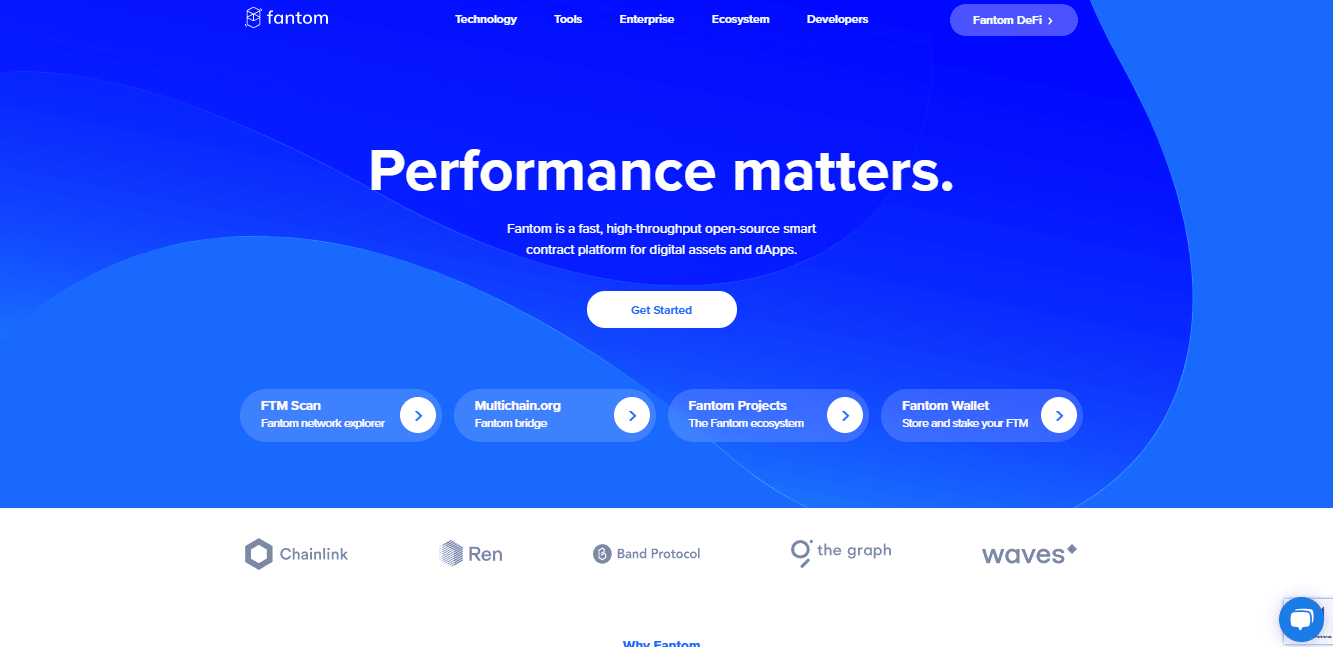
Fantom offers enterprise blockchain services around its consensus-as-a-service, allowing clients to build public or private blockchains with their own parameters and can be used for different use cases.
8. Ripple
Ripple is an open source payment settlement platform for cross-border transactions, remittances and issuance of CBDCs, created in 2012 by Jed McCaleb and Chris Larsen.
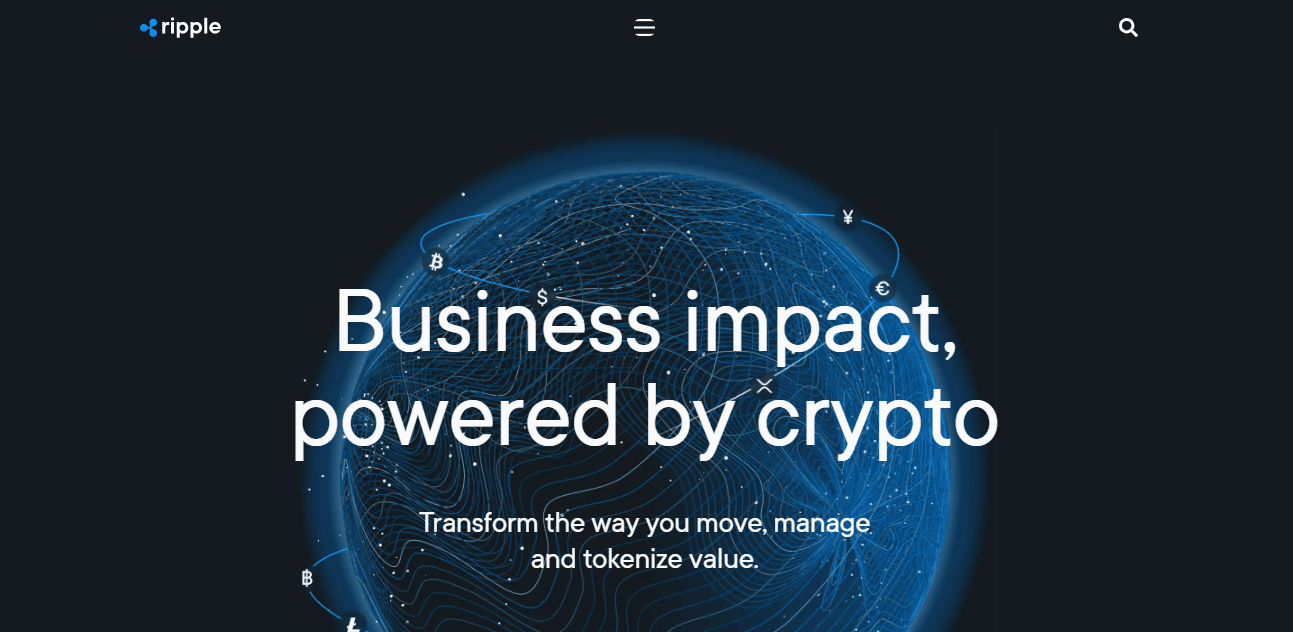
Ripple’s core structure consists of a Merkle tree. This system encrypts blockchain data in individual branches, allowing anyone to see specific transactions without having to download the entire tree data.
Ripple’s enterprise solutions have been leveraged by dozens of financial institutions worldwide, including Bank of America, SBI Remit, Novatti and Banco Rendimiento.
9. Cardano – Enterprise
Cardano is a blockchain platform developed by Input Output (IOHK) and features smart contract programmability for various use cases.
Cardano Enterprise is Cardano’s institutional platform that offers blockchain products to private and public entities across diverse fields, including universities, retail, agriculture, government, finance and healthcare.
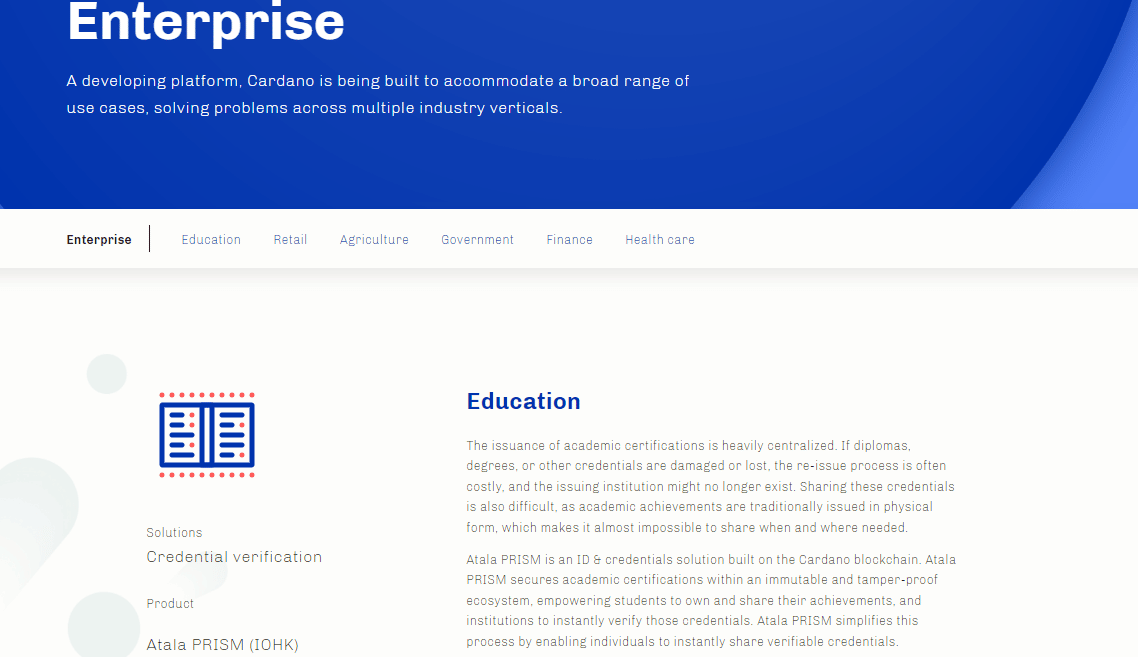
One of their flagship products is Atala PRISM, a self-sovereign identity (SSI) system built on Cardano. It offers Decentralized Identifiers (DIDs) to secure IDs and credentials on the blockchain and allows individuals to instantly share their data and achievements within their respective organizations, be it universities, financial institutions or governments
For agriculture, healthcare, manufacturers and other key players in the supply chain industry, Cardano offers Atala Scan, a supply chain tracking system that can verify the quality, history and provenance of goods using “smart seals”, a type of label containing a near field communication (NFC) chip, and small enough to be incorporated into bottle caps.
10. Tezos
Tezos is a blockchain platform that allows Web2 companies to leverage blockchain technology across all fields, including NFTs, DeFi, CBDCs, cross-border payments and payment systems.
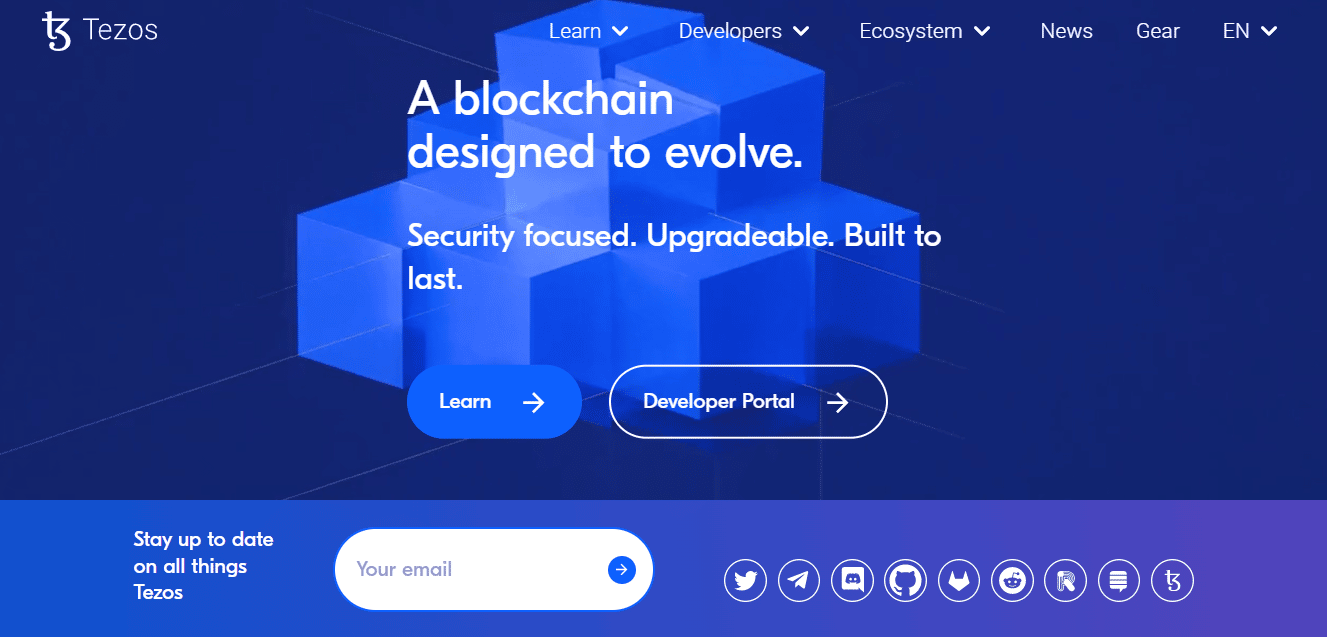
Tezos has been a key player in accelerating cryptocurrency and blockchain technology into the mainstream world. The list of partnerships and case studies includes McLaren, Manchester United, Red Bull and Misfits Gaming.
In 2020, Societe Generale, a French multinational financial institution, uses Tezo’s blockchain to launch a CBDC for interbank settlements. In 2021, Tezos partnered with game publisher Ubisoft to introduce NFTs to Tom Clancy’s Ghost Recon Breakpoint. This was the first time a major video game company switched to Web3.
Final Thoughts: Blockchain for Enterprises
These enterprise blockchain platforms offer innovative ways to solve decades-long pain points across various industries and have varying network costs.
Other blockchain platforms have a different focus: bringing Web2 platforms like social media companies into Web3, offering huge opportunities across DeFi, NFTs and more for their businesses and applications.
However, Web3 is still in its infancy with a lot of trial and error.
Whatever it is, the amount of money poured into these blockchain-based solutions is a testament to the faith many institutions and businesses have in this technology.


